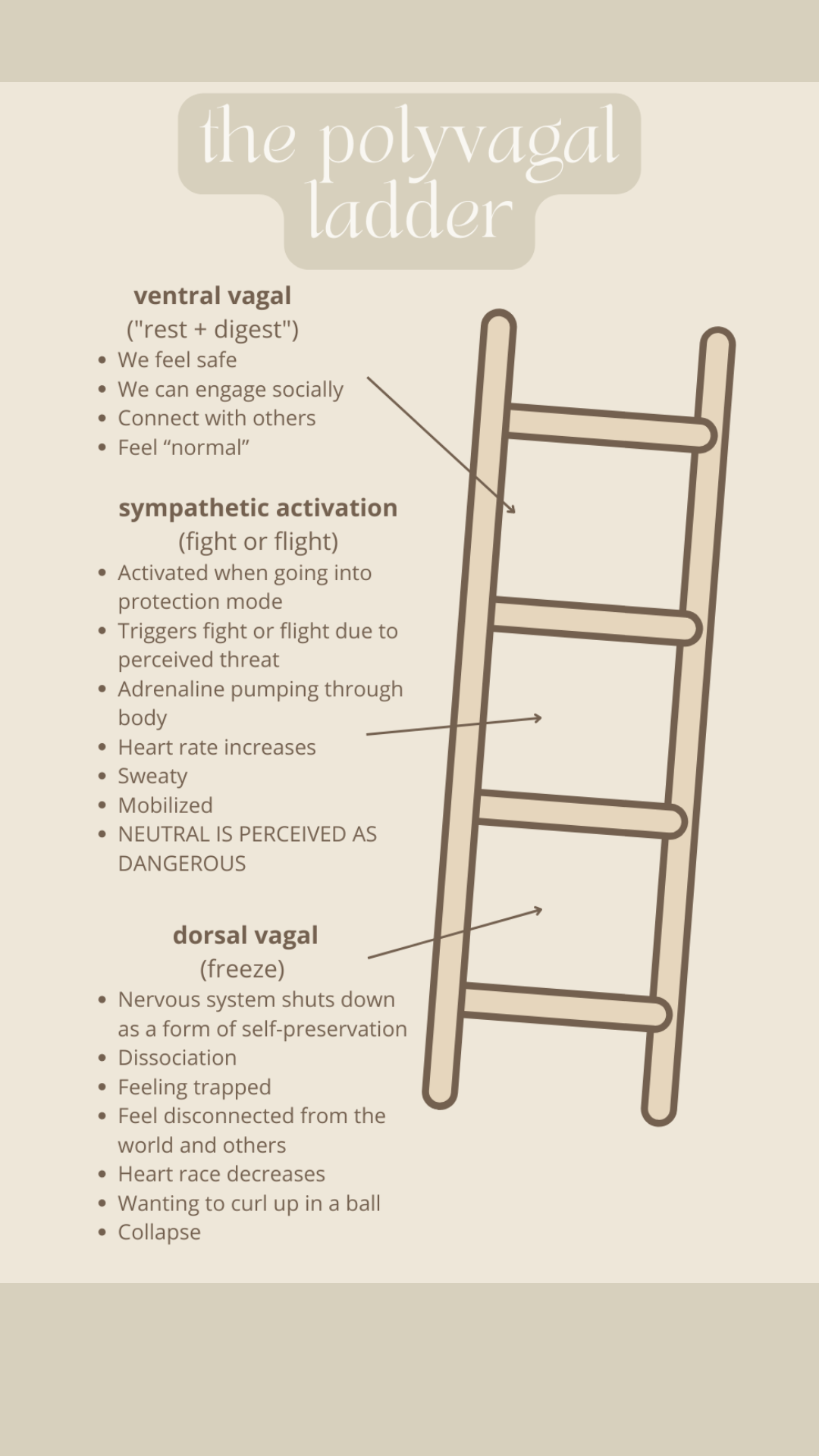An Introduction to Understanding Your Nervous System
The Nervous Sytem
Have you ever wondered how your body talks to itself? Well, it is all thanks to your nervous system! It’s like a giant communication network that helps different parts of your body work together. Let’s take a closer to look at what is actually happening within our bodies.
Your brain is like the boss of the nervous system. It's in charge of thinking, feeling, and making decisions. It has billions of special cells called neurons that help send and receive messages. The spinal cord is like a messenger, passing signals between your brain and the rest of your body. It also helps control things like your heartbeat and breathing.
Neuroception, a coined termed by Dr. Stephen Prges the creator of Polyvagal Theory, is a term that describes how our nervous system automatically detects and responds to cues in our environment. It’s like a hidden superpower that helps us sense whether a situation is safe, dangerous, or somewhere in between, even before we realize it. Our nervous system is constantly scanning the environment, picking up signals and clues from things like people's facial expressions, tone of voice, body language, and the overall atmosphere around us. It then processes this information and sends messages to our brain, which help us decide how to react. However, chronic stress and/or trauma can lead to misreading cues.
Polyvagal Theory
Polyvagal theory is an idea that helps us understand how our nervous system responds to different situations and influences our emotions, behaviors, and relationships. It's like a roadmap that explains why we react the way we do in certain circumstances. The vagus nerve is what connects our nervous system to our brain and plays a crucial role in shifting us between the different zones based on the signals it recieves; it has a direct link to our gut, lungs, and heart.
According to polvagal theory, our nervous system has three main states or “zones”: rest and digest, fight or flight, and the freeze state.
When our nervous system feels safe this means our ventral vagal pathway is activated. Here we are able to rest and relax, we can engage socially, connect with others, and feel "normal."
When our nervous system goes into protection mode, this indicates that our sympathetic nervous system has become activated. When our sympathetic nervous system becomes activated, it keeps us alive against the perceived threat by triggering our fight or flight. When this is happening we can feel the adrenaline pumping through our bodies, our heart rate increases, we sweat, and we feel more mobilized. During this time, neutral is often experienced as dangerous.
Lastly, our nervous system sometimes shuts down as a form of self-preservation because the body thinks that we are in a life-threatening situation. This is when the dorsal vagal pathway is activated. We might experience this through dissociation, feeling trapped, out of the body, and disconnected from the world, our heart rate decreases, and we might want to curl up into a ball or collapse.
The key idea of polyvagal theory is that our nervous system is always scanning the environment to determine which zone we should be in. It does this based on cues from our surroundings, such as facial expressions, tone of voice, and the behavior of others.
The challenging part when it comes to our nervous system is that it receives cues from our brain when it believes we are in a dangerous situation, and our brain cannot differentiate between a real or perceived threat. Like when someone who has gone through a traumatic experience has flashbacks, they truly believe that they are in danger once again because their nervous system is responding to a perceived threat (i.e. visuals or thinking about it).
By understanding polyvagal theory, we can become more aware of our own nervous system's responses and better understand why we feel certain emotions or react in specific ways. It can also help us recognize when we or others might be in a fight-or-flight or freeze state, allowing us to respond with empathy and support.
Come back next week and Amy will review different coping skills that help regulate your nervous system based on what zone you are in!
—————————————————
References:
Dana, D. Applying Polyvagal Theory to Improve Client Outcomes [Presentation].
Hill, D. (2022, September 19). How to Use Polyvagal Theory to Shift Your Nervous System with Deb Dana (episode 35). https://drdianahill.com/035-how-to-use-polyvagal-theory-to-shift-your-nervous-system-with-deb-dana/#:~:text=Polyvagal%20theory%20explains%20how%20our,system%20toward%20connection%20and%20safety.
About me;
Dr. Dani is passionate about working with teens and emerging adults who are navigating trauma, substance use, depression, anxiety, and other life transitions. She utilizes an integrative and holistic approach when working with her clients, always reminding the client that they are the expert on themselves. If you’re interested in a free consultation to see if we would be a good fit, click here!
Pin This Post!
Related Posts
If this post was helpful, you might also like these…










